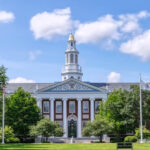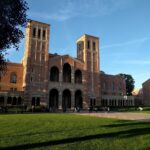The Glass Ceiling of Women’s Studies
Durham, N. C.—Colleges and universities spend billions on women’s studies programs, mostly at the taxpayers’ expense, but coeds are avoiding these programs to a greater extent than television viewers avoid the WB.
“My question is, if I do major in women’s studies, what am I going to do with it, other than go to work for the Carolina Women’s Center?,” asks Kat Rodgers, a junior at the University of North Carolina (UNC) at Chapel Hill. Miss Rodgers spoke on the student panel at a conference sponsored by the John William Pope Center for Higher Education Policy.
In 2004, there were 34 women’s studies courses offered on four UNC campuses, according to journalist Melana Zyla Vickers, who spoke on another panel at the same conference. Out of thousands who attend the quartet of schools Mrs. Vickers looked at, 43 students majored in, took courses in or even considered taking classes in women’s studies.
From what Mrs. Vickers found, those MIA from the class list are not missing much. “At UNC-Chapel Hill [in the introductory class], in the first week you have a class on women’s physiology and another on ‘the myth of the vaginal orgasm,’” Mrs. Vickers reports. “If you take an advanced course in women’s studies you can learn about ‘gender communities.’” UNC-Chapel Hill spends $418,000 in taxpayer funds on this enterprise, according to Mrs. Vickers.
Mrs. Vickers is a former member of the USA Today editorial board who has also written for the Wall Street Journal. She conducted an extensive survey on women’s studies courses in North Carolina for the Pope Center, which is based in the state.
Also, the women who are studied in such courses tend to share the same political perspective: students inclined to do so will look mostly in vain in women’s studies texts for famous conservative women. “There is one mention of Phyllis Schlafly,” according to Mrs. Vickers, “to show that she opposed the Equal Rights Amendment and is against abortion.”
From what Mrs. Vickers told me, Great Britain’s first prime minister, the conservative Margaret Thatcher, and the first black woman to serve as U. S. Secretary of State, Condoleeza Rice, don’t make the indices in these texts either. I asked Mrs. Vickers about the presence, or absence, of famous women in these courses who might not be quite the political lightning rods that the Iron Lady and Condi are.
Specifically, I asked whether women’s studies enrollees get to learn about Harriet Tubman, Harriet Beecher Stowe, Amelia Earhart or Madame Marie Curie. “They come up,” Mrs. Vickers said, “but rarely.”
Malcolm A. Kline is the executive director of Accuracy in Academia.




